One of the great pleasures of working with manuscript collections is the discovery of the unexpected. When delving into a collection for the first time, one can never be sure just what surprises may be found. The Harold Balch Bailey autograph book, housed within the Bailey-Law Collection (Ms1982-002), is one such surprise.
The Bailey-Law Collection combines the papers of John Eugene Law and Harold E. Bailey (son of Harold Balch Bailey). Both men were accomplished ornithologists, though neither seems to have been formally educated in the subject. The collection contains ornithological field notes, subject files, printed materials, and photographs but is perhaps of more value for its many biographical files, assembled by Bailey, chronicling the lives and activities of other naturalists. Some of these files are extensive and contain correspondence and field notes of their subjects.
Given the collections focus on ornithology and naturalists, its a bit of a surprise to find ensconced here a small, fragile autograph book that has almost no connection to these two subjects. Assembled by the elder Bailey (himself a naturalist), the collection includes the autographs of more than 50 of the foremost personages of the 19th century. Gathered here are signatures of three (possibly four) U. S. presidents; several Union Army generals; no fewer than 14 governors; and well-known authors, artists, and musicians.
Unfortunately, as so often happened in early autograph-collecting, little value was placed on the source material. So, while some of the autographs are found on cards expressly made for the purpose, many others were clipped from documents. In fact, the autograph of John James Audubon is accompanied by a note from his granddaughter, explaining that the letter from which the signature was clipped had contained so many details of the familys home life that they couldnt bear to part with it. The Audubons had no qualms about mutilating the letter, however.
While these signatures have some artificial, market-driven value as objects and may be of general interest to some, most have negligible research value (except insofar as the collection as a whole tells us something about the collector). The context of some of the autographs, however, may be of some value to researchers. The signatures of poets Oliver Wendell Holmes Sr. and William Deane Howells, for example, appear below handwritten bits of their poetry, and the signature of artist W. L. Champney appears on an ink drawing.
Elsewhere among the elder Baileys papers are three items relating to the Massachusetts militia. One of these documents, dated 1836, is signed by J. Q. Adams, presumably former president John Quincy Adams, serving at that time as a Massachusetts congressman. Like the autograph book, these items seem out of place within the collection; because of their association with Bailey, they remain in a file under his name.
Historically, archives and other repositories have been victimized by overly eager autograph-hounds. If youve ever visited Special Collections and wondered about some of the restrictions in the Reading Room, bear in mind that its our mission to protect the objects in our care. The security measures are in place to ensure the preservation of our shared history and allow future generations the thrill of discovery.
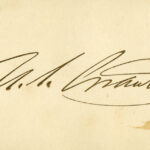
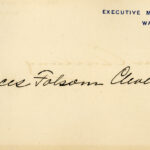
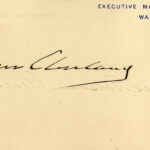
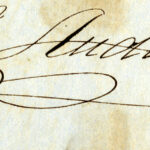
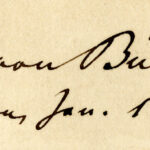
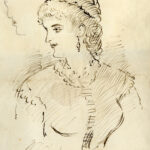
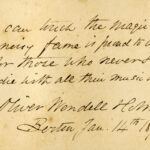
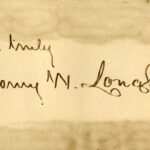
One thought on “Hidden History at Special Collections II: The Harold B. Bailey Autograph Book”